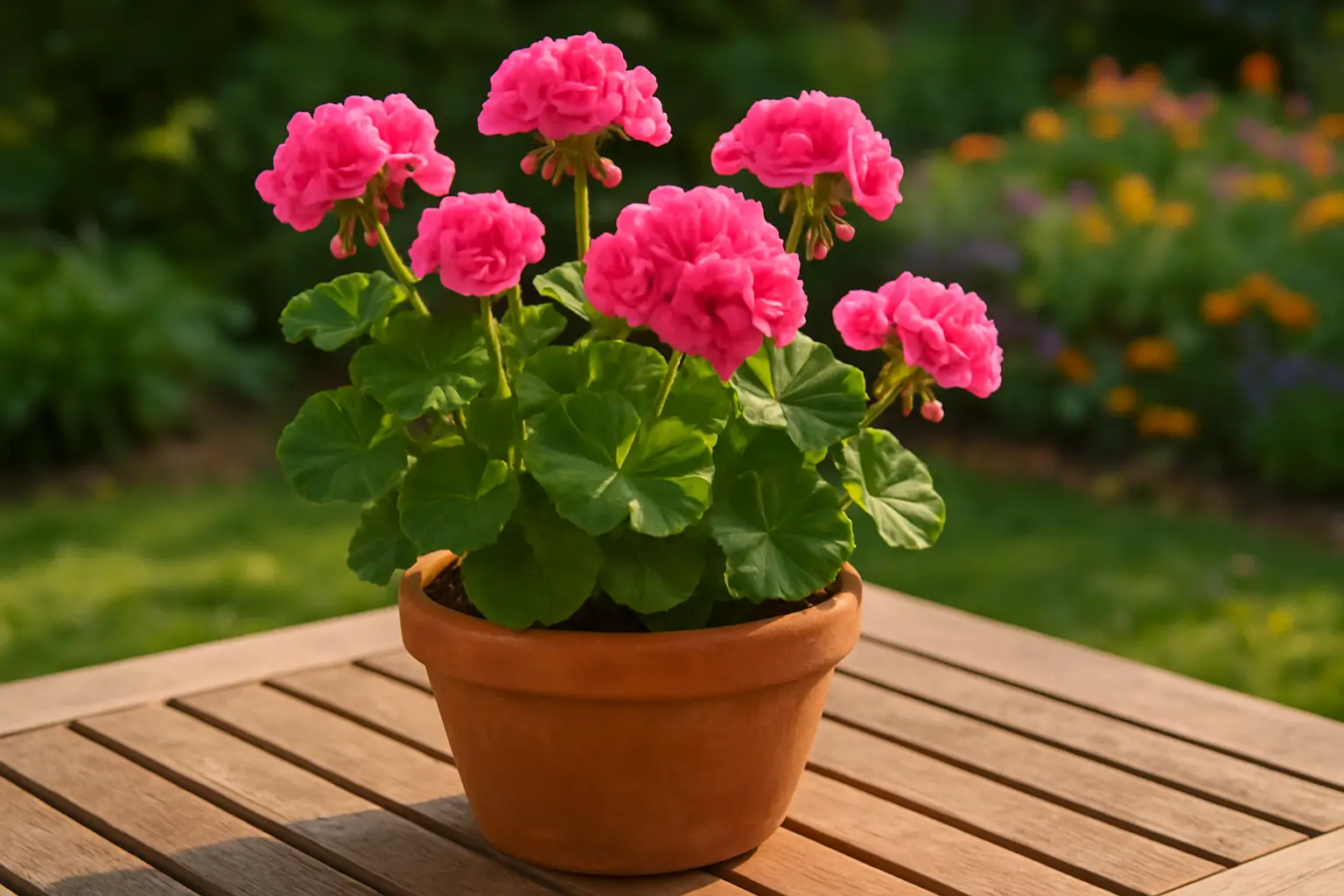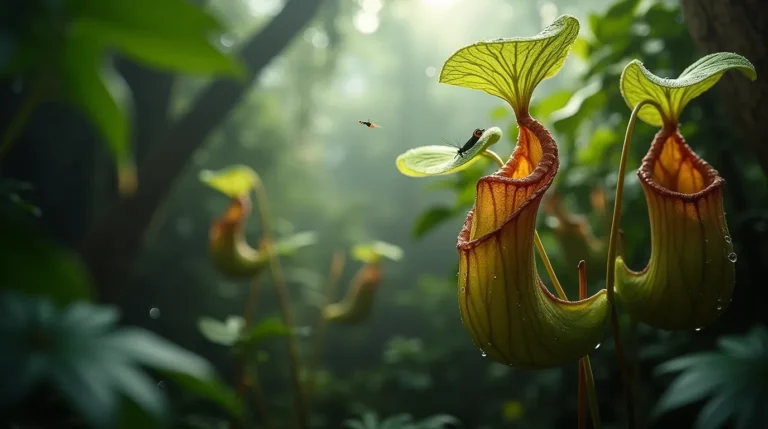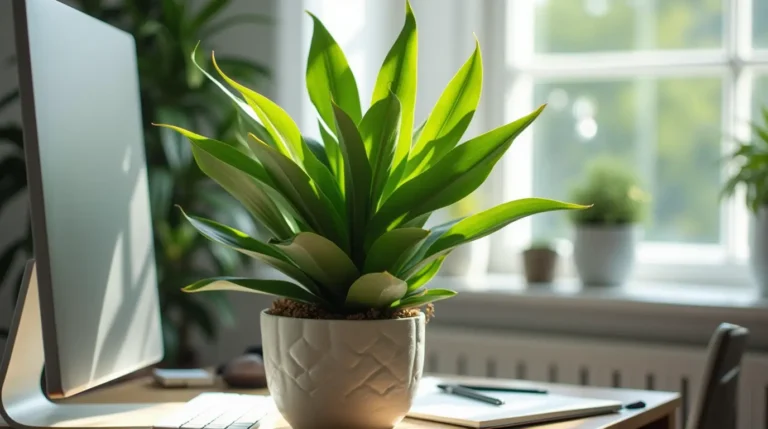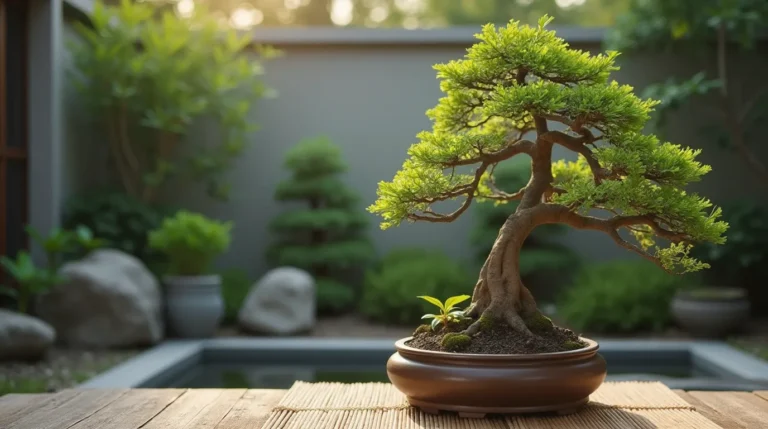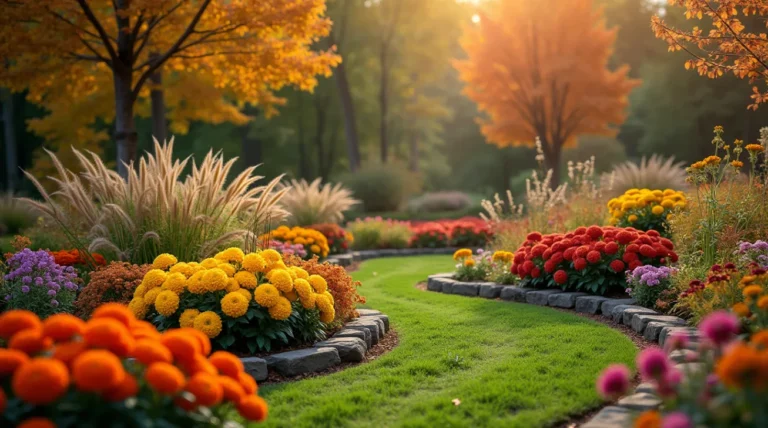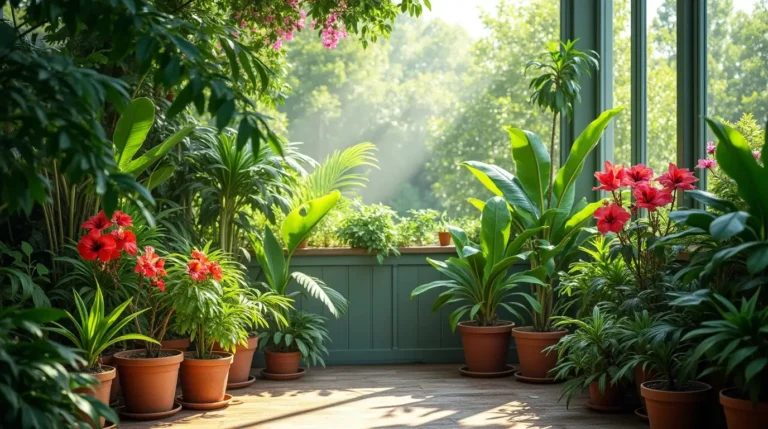Geraniums Plant Care: How to Grow Beautiful and Healthy
Growing geraniums can be a rewarding experience, adding vibrant colors and beauty to your garden or indoor space.

To achieve optimal results, it’s essential to understand the basics of geranium care. Proper care includes providing the right environment, watering, and fertilization.
This comprehensive guide will walk you through the steps necessary to grow healthy and thriving geranium plants.
Key Takeaways
- Understand the importance of proper geranium care
- Learn how to provide the right environment for your geraniums
- Discover tips on watering and fertilizing your geranium plants
- Explore common mistakes to avoid in geranium care
- Find out how to troubleshoot common issues with your geraniums
Introduction
Whether you’re a seasoned gardener or a beginner, geraniums are an excellent addition to your garden. Geraniums are known for their vibrant flowers and adaptability, making them a popular choice for both indoor and outdoor spaces.
Brief Overview of Geraniums
Geraniums are blooming plants that are part of the Geraniaceae family. There are various geranium varieties, including the popular red geraniums known for their striking blooms. Another notable variety is the Martha Washington geranium, cherished for its unique appearance and historical significance.
These plants are not only beautiful but also relatively easy to care for, making them suitable for gardeners of all levels. With proper care, geraniums can bloom throughout the growing season, providing continuous color and beauty.

Importance of Growing Geraniums for Garden and Home
Growing geraniums can significantly enhance your garden or home decor. Their flowers come in a range of colors, including red, pink, and white, adding visual appeal to any setting. Moreover, geraniums are known to have certain benefits, such as improving air quality and repelling certain pests.
Incorporating geraniums into your garden or indoor spaces can also add aesthetic value, making them a worthwhile addition for both their beauty and potential benefits.
Types of Geraniums
With numerous varieties to choose from, geraniums offer a wide range of options for gardeners in the United States. Geraniums are broadly categorized into different types, each with its unique characteristics and growing conditions.
Common Geraniums vs. Pelargoniums
A common confusion among gardeners is between Geranium and Pelargonium. Although they both belong to the Geraniaceae family, they are classified under different genera. True geraniums, also known as Geranium, are often referred to as “cranesbill” due to the shape of their seed pods. Pelargonium, on the other hand, is commonly referred to as “geranium” in many garden centers and is known for its vibrant flowers and zonal geranium varieties.

Best Varieties for U.S. Climate
The U.S. climate varies significantly from region to region, making some geranium varieties more suitable than others. For most U.S. climates, Pelargonium varieties such as zonal geraniums are popular due to their hardiness and adaptability. They can be grown from geranium seeds or seedlings and thrive in well-drained soil with adequate sunlight.
Some popular geranium varieties for the U.S. climate include ‘Rozanne’ and ‘Macrorrhizum’ for cooler climates, and various zonal geraniums for warmer regions. These varieties offer a range of flower colors and growth habits, allowing gardeners to choose the best fit for their specific needs.
How to Plant Geraniums: A Step-by-Step Guide
To enjoy vibrant geraniums, understanding how to plant them correctly is essential. Geraniums are popular for their beautiful flowers and relatively easy care, making them a favorite among gardeners. Whether you’re a beginner or an experienced gardener, following a proper planting guide can ensure your geraniums thrive.
Choosing the Right Location: Sunlight and Soil Conditions
Geraniums require a location with adequate sunlight. Most varieties need at least 4-6 hours of direct sunlight per day. When it comes to soil, geraniums prefer well-draining soil to prevent root rot. Poor drainage can lead to waterlogged soil, which is detrimental to geraniums.
The ideal soil pH for geraniums ranges between 6.0 and 7.0. You can test your soil pH using a soil testing kit available at gardening stores. Based on your soil type, you may need to amend it with organic matter like compost to improve its structure and drainage.
| Soil Type | Characteristics | Amendments |
|---|---|---|
| Clay Soil | Poor drainage, dense | Add compost or peat moss |
| Sandy Soil | Good drainage, lacks nutrients | Add compost or manure |
| Loamy Soil | Balanced, good drainage, fertile | Minimal amendments needed |
Preparing the Soil for Healthy Growth
Before planting geraniums, prepare the soil by loosening it to a depth of about 8-10 inches. This helps in root establishment and improves drainage. Mixing in a 2-inch layer of compost or well-rotted manure can enhance soil fertility and structure.

Planting Geraniums: A Step-by-Step Guide
1. Start by selecting healthy geranium seedlings with no signs of disease or pests.
2. Dig a hole that is as deep and twice as wide as the root ball of the seedling.
3. Carefully take the seedling out of its container and set it into the prepared hole.
4. Fill the hole with soil, gently firming it around the roots. Ensure the soil level is the same as it was in the container.
5. Water thoroughly after planting to settle the soil around the roots.
By following these steps and choosing the right location with appropriate soil conditions, you can successfully plant geraniums and enjoy their beautiful blooms.
Caring for Your Geraniums After Planting
To keep your geraniums healthy and blooming, understanding the basics of their care is vital. Proper care after planting ensures that your geraniums thrive and continue to beautify your garden or home.

Watering: Best practices for watering geraniums
Watering is a critical aspect of geranium care. Geraniums need adequate water, especially during their first few weeks after planting. However, excessive watering can cause problems like root rot and other complications.
To water your geraniums correctly, check the soil moisture by inserting your finger into the soil up to the first knuckle. If the soil feels dry, it’s time to water. Water the plant thoroughly until excess moisture drains from the bottom holes.
- Water geraniums in the morning to prevent fungal diseases.
- Try to keep the foliage dry during watering to help prevent fungal diseases.
- Adjust watering frequency based on weather conditions.
Fertilizing: Ideal fertilizers for robust growth
Feeding your geraniums regularly is key to encouraging vigorous growth and plentiful blooms. Use a balanced fertilizer containing equal parts nitrogen, phosphorus, and potassium (NPK) for best results.
You can use a slow-release fertilizer at the time of planting, followed by a water-soluble fertilizer every two weeks during the growing season. Organic fertilizers like compost tea or fish emulsion can also be effective.
Maintaining Leaves and Flowers: How to trim and maintain blooms
Regular maintenance, including trimming and pruning, is crucial for keeping your geraniums looking their best. Remove faded or dying flowers regularly to stimulate new blooms.
Trim back leggy stems to promote bushy growth, and remove any leaves that are damaged or diseased. Prune your geraniums in the spring to shape them and encourage new growth.
By following these care tips, you can enjoy beautiful, healthy geraniums throughout the growing season.
Common Problems and Solutions
To keep your geraniums thriving, it’s essential to identify and address potential problems early on. Geraniums, despite their hardiness, can be susceptible to pests, diseases, and environmental stresses. Understanding these challenges and knowing how to mitigate them is crucial for successful geranium care.
Pests and Diseases
Geraniums can be affected by various pests and diseases, including aphids, whiteflies, and root rot. Aphids are small, sap-sucking insects that can cause curled or distorted leaves. To manage aphids, use insecticidal soap or neem oil. Root rot, often caused by over-watering, can be prevented by ensuring good drainage and avoiding excessive moisture.
Moisture and Temperature Management
Geraniums require balanced moisture; over-watering can lead to root rot, while under-watering can cause stress. To check moisture, stick your finger into the soil up to your first knuckle; if it feels dry, water the plant. Geraniums typically grow best in temperatures ranging from 65°F to 75°F (18°C to 24°C). Avoid exposing them to extreme temperatures.

Winter Care
In colder climates, geraniums may need protection during the winter. For outdoor geraniums, cut back the foliage to about 6 inches from the ground before the first frost. For container geraniums, bring them indoors to a bright, cool location. During dormancy, reduce watering to just once a month.
Benefits of Geraniums in Your Garden and Home
The benefits of having geraniums in your garden or home are multifaceted, ranging from air quality improvement to aesthetic enhancements. Geraniums are not only visually appealing, but they also contribute to a healthier environment.
One of the significant advantages of geraniums is their ability to improve air quality. They are known to purify the air by removing harmful pollutants, thus creating a cleaner and healthier environment for you and your family.
How do they improve air quality?
Geraniums, like many other plants, have the ability to purify the air. They absorb carbon dioxide and release oxygen, which is essential for human life. Moreover, certain varieties of geraniums are known to remove harmful pollutants from the air, further improving their quality.
A study on indoor plants, including geraniums, showed that they can significantly reduce the concentration of certain air pollutants. This makes geraniums an excellent choice for indoor spaces, especially in urban areas where air quality can be a significant concern.
| Geranium Variety | Air Purification Capability | Aesthetic Value |
|---|---|---|
| Pelargonium | High | High |
| Common Geranium | Moderate | Moderate |
| Ivy Geranium | High | High |
Aesthetic value for indoor and outdoor spaces
Geraniums are renowned for their beautiful flowers and attractive foliage, making them a popular choice for both indoor and outdoor decor. They come in a variety of colors and forms, allowing you to choose the perfect variety to suit your space.
For outdoor spaces, geraniums can add a vibrant splash of color to your garden or yard. They can be planted in flower beds, containers, or hanging baskets, providing flexibility in how you choose to display them.
Geranium varieties like Pelargonium and Ivy Geranium are particularly popular for their aesthetic value.
Incorporating geraniums into your indoor spaces can also enhance their aesthetic appeal. They can be placed on windowsills, desks, or shelves, adding a touch of natural beauty to any room.
Overall, geraniums are a versatile and beneficial addition to any home or garden, offering both practical and aesthetic benefits.
Expert Tips for Growing the Best Geraniums
Expert advice can make a significant difference in growing beautiful and healthy geraniums. By understanding the optimal conditions and techniques, you can enhance your geranium growing experience.
Best Seasons to Plant in the U.S.
The ideal time to plant geraniums in the U.S. varies depending on your climate zone. Generally, spring and early summer are considered the best times to plant geraniums, as they allow the plants to establish themselves before the heat of summer.
In warmer climates, such as in southern states, fall can also be a good time to plant geraniums, as it gives them a chance to grow before the cooler winter months.
| Climate Zone | Best Season to Plant | Tips |
|---|---|---|
| Cooler climates (northern states) | Spring | Wait until the last frost has passed |
| Warmer climates (southern states) | Fall or early Spring | Avoid planting during peak summer heat |
| Container gardening | Any season | Ensure proper container drainage |
Using Geraniums in Containers, Hanging Baskets, and Vertical Gardens
Geraniums are versatile plants that can thrive in various settings, including containers, hanging baskets, and vertical gardens. When planting geraniums in containers, use a well-draining potting mix and select a container that is at least 6 to 8 inches deep.
For hanging baskets, select a variety that trails or has a cascading habit, such as the ‘Rozanne’ or ‘Stellar’ varieties. Make sure the basket has good drainage holes to prevent waterlogged soil.
Vertical gardens offer another creative way to showcase geraniums. Use a trellis or a wall-mounted planter to add a decorative element to your garden or indoor space.
Conclusion
Growing geraniums can be a rewarding experience, adding beauty and vibrancy to your garden or indoor space. By understanding the different geranium varieties and following proper geranium care techniques, you can enjoy these lovely plants throughout the year.
Key Takeaways for Successful Geranium Care
To recap, we’ve discussed the importance of choosing the right location, preparing the soil, and maintaining your geraniums through proper watering and fertilizing. By following these steps, you can ensure your geraniums thrive and provide a stunning display of flowers.
Share Your Geranium Growing Experiences
We’d love to hear about your experiences growing geraniums. Whether you’re a seasoned gardener or just starting out, your insights can help others in our community. Feel free to share your tips, ask questions, or discuss your favorite geranium varieties.
FAQ
What are the best varieties of geraniums for the U.S. climate?
Some of the best varieties for the U.S. climate include zonal geranium, Martha Washington geranium, and ivy geranium, which are known for their hardiness and adaptability.
How often should I water my geraniums?
Geraniums should be watered when the top inch of soil feels dry to the touch, usually once a week, but this frequency may vary depending on weather conditions.
What is the ideal fertilizer for geraniums?
A balanced fertilizer with equal parts nitrogen, phosphorus, and potassium (NPK) is ideal for promoting healthy growth and blooms in geraniums.
How do I propagate geraniums?
Geraniums can be propagated through stem cuttings, division, or seeds. Stem cuttings are a popular method, involving cutting a section of stem, removing lower leaves, and planting it in well-draining soil.
What are common pests that affect geraniums, and how can I treat them?
Common pests include aphids, whiteflies, and spider mites. Treatment involves inspecting plants regularly, removing infested areas, and using insecticidal soap or neem oil as needed.
Can geraniums be grown indoors, and what conditions do they require?
Yes, geraniums can be grown indoors in containers with good drainage, placed in a sunny location, and watered carefully to avoid overwatering.
How do I prune geraniums to maintain their shape and promote blooming?
Prune geraniums by removing spent flowers, cutting back leggy stems, and shaping the plant to promote healthy growth and continuous blooming.
What are the benefits of using geraniums in indoor and outdoor spaces?
Geraniums improve air quality, add aesthetic value, and can be used in various decorative arrangements, making them a versatile and beneficial addition to both indoor and outdoor spaces.

